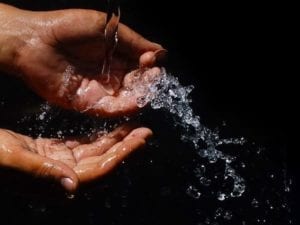Rains soaked Gauteng and many other parts of the country last week, however, the current 66,2% national dam levels may not be enough to fight the COVID-19 pandemic that has wreaked havoc in many provinces.
The Government has made a plea to all citizens to wash their hands with water and soap frequently and to sanitise regularly. According to the World Health Organisation, the practice of washing hands regularly is central to fighting this latest scourge. This week the Minister of Human Settlements, Water and Sanitation, Lindiwe Sisulu, directed the department to increase provision of water and sanitation in high density public areas, informal settlements and rural areas in response to the Coronavirus that has reached our shores. This is in line with measures which have been put in place to minimise and curb the spread of the virus. According to the latest report by the Department of Water and Sanitation, the country has a volume of 21 189,3 cubic metres of water in its reservoirs, at 60% of its full capacity. The report suggests that the sporadic rainfall during summer has supplied sufficient water for basic use in Gauteng, KwaZulu-Natal, Mpumalanga, North West, Free State and parts of Northern Cape.However, the downpours have not broken the strain of the drought in Eastern Cape and parts of Northern Cape. As a result, the Eastern Cape Government declared the province a drought disaster area to enable it to release funds to help affected municipalities.
With the advent of the COVID-19 pandemic, the government has stressed the importance of the washing of hands as a key to adhering to good hygiene standards to control the spread of the disease. However, the wash-your-hands campaign is likely to put a strain on the availability of water throughout winter unless South Africans doubled their efforts to conserve water. Gauteng has the highest figures of people who have been infected by the Coronavirus. In the same vein, the province recorded the highest dam levels at 98,1%. The province also boasts the highest volumes of water that is stored in its reservoirs. It is followed by Northern Cape at 90,2% and Mpumalanga at 75,2%. According to the department’s report, Western Cape has a total 44,1% level, slightly below 50% volumes of water in its reservoirs. It is expected to be boosted by heavy winter rains that will start coming down at the end of May. The province of Limpopo has seen regular rainfalls that have increased the province’s dam level from 46% in the past four months to 68,4%.







